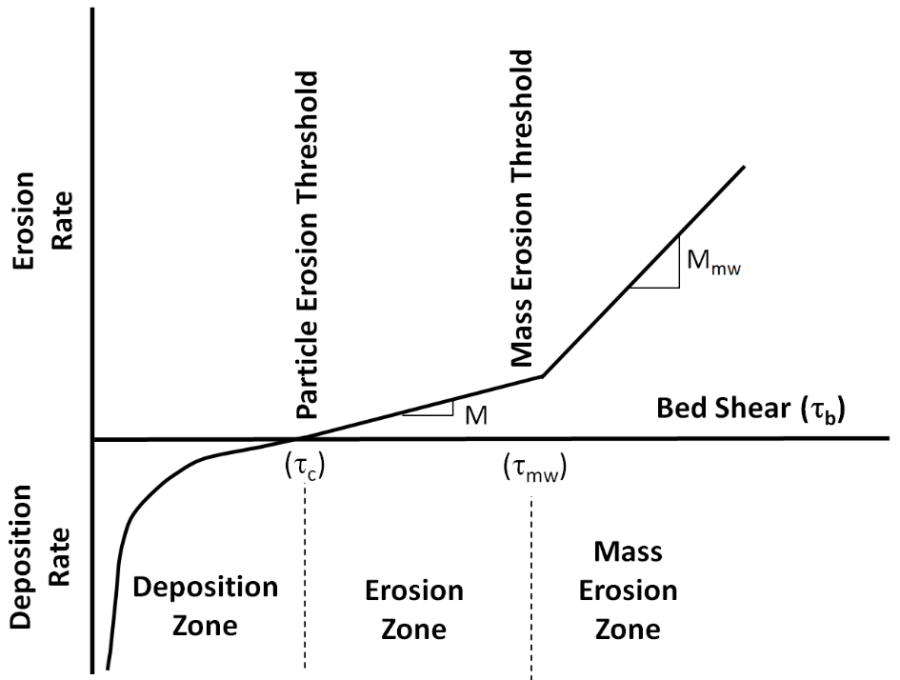If the model objectives and systems morphology make cohesive erosion and deposition important, however, the standard transport equations are not sufficient. The Krone and Partheniades equations are simpler than the cohesionless transport functions, building much of the predictive power into several, site specific parameters.
Earlier versions of HEC-RAS included a version of the Krone and Partheniades cohesive approach. This approach differed from the algorithm implemented in HEC 6 and, subsequently HEC 6T. Both are defensible, taking alternate approaches applying the Partheniades scour relationship to a mixed bed. Therefore, the original HEC-RAS algorithm was retained but the HEC 6T algorithm was added as an option. Both methods apply the Krone and Partheniades equations to compute deposition and erosion rates in the same way.
HEC-RAS uses either the Krone equation to compute deposition or the Partheniades equations to compute erosion and selects between them based on the bed shear stress. Two user defined shear thresholds define three cohesive transport conditions: Deposition, Particle Erosion, and Mass Erosion.
The user defined thresholds are:
τc: Critical shear threshold for particle erosion
τm: Critical shear threshold for mass erosion
where τc ≤ τm. HEC-RAS computes a bed shear stress (τb) for each cross section and compares it to these two thresholds, determining the appropriate cohesive process, and applying the appropriate equation (Figure 13-9).

Previous models often included a fourth zone, an equilibrium zone, which neither eroded nor deposited. This approach subdivided τc into deposition τd and erosion τe shears. In the intermediate zone between these (τd<τb<τe) binding forces exceeded the erosion forces, but turbulence was sufficient to keep transported particles in suspension. This approach computed no bed change if bed shears fell in this equilibrium zone. More recent work has caused this concept to fall out of favor (Sanford and Halka, 1993). Therefore, HEC-RAS uses a single critical shear threshold (τc), above which particles erode and below which they deposit.